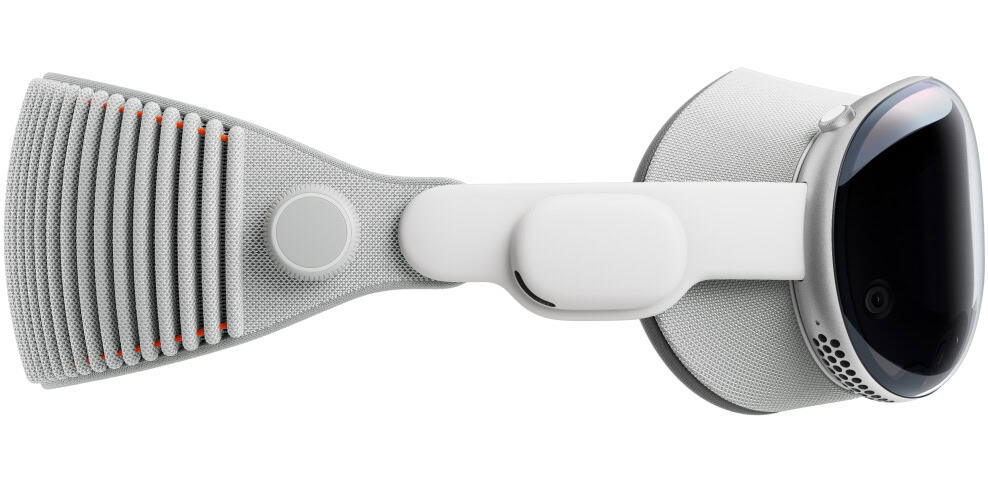Rumors are heating up around Apple’s next-gen mixed reality headset, the Vision Pro 2. Multiple new reports from Chinese media suggest that the device has quietly entered mass production in China—well ahead of schedule according to most analyst predictions. If true, this signals a potential shift in Apple’s strategy for the spatial computing market.
Mass Production May Already Be Underway
According to Chinese outlet ITHome and other supply chain sources, key components of the Vision Pro 2—including display panels and external shells—have begun rolling off production lines. Lens Technology is reportedly providing the curved front glass, while Changying Precision is believed to be manufacturing part of the outer casing. These are the same suppliers Apple used for the original Vision Pro, suggesting Apple is maintaining some continuity even as it looks to scale production.

Although Apple has not confirmed any of this officially, several reports align on the fact that production activity is ramping up. However, not everyone agrees on the timeline. Prominent analyst Ming-Chi Kuo has consistently stated that Vision Pro 2 wouldn’t enter mass production until the second half of 2025, casting some doubt on the earlier estimates.
So, either Apple has split the Vision line into separate models—perhaps a “Vision” and “Vision Pro” line—or the timeline has genuinely accelerated due to a change in strategy or supply chain readiness.
A More Affordable Price Point?
One of the biggest criticisms of the first Vision Pro was its price tag: $3,499. While it was clearly a premium, first-generation product meant for early adopters, it priced out the vast majority of potential consumers. Rumors surrounding the Vision Pro 2 suggest that Apple has taken that feedback to heart.
Insiders hint that the Vision Pro 2 (or a possible “Vision” base model) may start at around $1,500, cutting the price by more than half. That dramatic drop could be made possible through strategic cost-cutting: simpler hardware, fewer cameras and sensors, or alternate suppliers. Reports indicate Apple may tap Samsung Display or China’s SeeYa Technology for micro-OLED panels, potentially replacing Sony’s more expensive displays.
A lower price point could be a game-changer, helping Apple move beyond developers and enterprise clients and finally attract mainstream consumers. If Apple is targeting a broader market for Vision Pro 2, it also raises questions about software support, app ecosystem expansion, and international rollout.
What This Means for Apple’s Mixed Reality Ambitions
The timing of these rumors is especially intriguing. The original Vision Pro only launched in early 2024 in the U.S., with international expansion still limited. If the Vision Pro 2 is already in production, Apple may be planning a two-pronged approach: keep the Pro model for high-end users, and release a cheaper Vision headset for the broader public.
That would mirror Apple’s strategy in other product categories like the iPhone and iPad, where “Pro” models exist alongside more affordable versions. It would also place Apple in a stronger position to compete with Meta, whose Quest line continues to dominate the consumer market at lower price points.
Whether these rumors turn out to be fully accurate or not, the momentum behind Apple’s mixed reality roadmap is clearly building. Developers are already experimenting with VisionOS, and with competition heating up across the XR space, Apple may be moving faster than expected.
If Vision Pro 2 is really nearing launch, we could see an announcement at WWDC 2025 or even earlier. Either way, the next chapter in Apple’s spatial computing journey is just around the corner—and it could be much more accessible this time.
Key Takeaways
- Recent reports suggest Apple Vision Pro 2 may have entered mass production in China earlier than expected.
- The next-generation headset could be priced significantly lower at around $1,500.
- New manufacturing partnerships with Samsung and other suppliers might help Apple reduce costs and increase production capacity.
In-Depth Analysis of Vision Pro 2’s Production
Recent reports suggest conflicting timelines for Apple’s Vision Pro 2 production, with some sources claiming mass production has already begun in China while analysts point to a later 2025 launch window.
Supply Chain Dynamics
The production of Vision Pro 2 involves a complex network of suppliers across Asia. According to industry sources cited by PowerPlant, manufacturing has already started in China, which contradicts earlier analyst predictions.
This early production phase likely focuses on small batch runs to test manufacturing processes and quality control. Apple typically works with several manufacturing partners to reduce supply chain risks.
Chinese factories play a crucial role in Apple’s production strategy due to their established expertise in assembling complex electronics. The manufacturing cost remains a significant factor, as the original Vision Pro’s $3,499 price tag limited its mass-market appeal.
Suppliers of specialized components like eye-tracking sensors and display modules are ramping up production capacity to meet Apple’s quality standards. This supply chain coordination represents one of the biggest challenges in bringing the device to market.
Technological Advancements
The Vision Pro 2 reportedly features significant hardware upgrades over its predecessor. Most notably, analyst Ming-Chi Kuo predicts the device will incorporate Apple’s upcoming M5 chip, providing substantial performance improvements for spatial computing applications.
The M5 chip would enable more responsive gesture control and eye tracking while potentially extending battery life. These enhancements address key limitations of the first-generation device.
Manufacturing these advanced components requires precision tooling and new production methods. The eye-tracking system, crucial for the device’s interface, demands particularly tight quality control during manufacturing.
The integration of advanced display technology continues to pose production challenges. Higher resolution displays with improved field of view require new manufacturing techniques that suppliers must perfect before mass production can fully scale.
Market Implications and Strategic Partnerships
The potential early production of Vision Pro 2 signals significant shifts in Apple’s XR strategy and could reshape competitive dynamics in the spatial computing market.
Price Comparisons and Market Positioning
Apple’s rumored focus on a lower-priced Vision Pro model could dramatically expand its market reach. The original Vision Pro’s $3,499 price tag limited its appeal to early adopters and developers. Industry analysts expect the next version to target a price between $1,500-2,000, making it more competitive with Meta’s Quest 3 ($499) and Sony’s upcoming XR offerings.
This price reduction would transform Vision Pro from a niche product to a mass-market device. Apple likely aims to position it between premium and mid-range segments.
Market data suggests Apple shipped around 400,000 Vision Pro units in 2024. A more affordable model could push this to 2-3 million units annually, significantly expanding the VisionOS ecosystem.
Collaborations and Competitor Analysis
Apple has reportedly strengthened partnerships with Seeya Technology for enhanced OLED displays and several content creators to expand spatial content offerings. These collaborations aim to address the “content gap” that limited the first Vision Pro’s appeal.
Meta remains the dominant XR player with over 20 million Quest headsets sold. Their Quest 3s, expected in late 2025, will directly challenge Apple’s new offering.
The timing of Vision Pro 2’s production suggests Apple wants to:
- Beat Meta’s next release to market
- Leverage the new Apple Intelligence Experience
- Expand ecosystem compatibility with other Apple devices
Sony and Samsung have delayed their competing products, apparently waiting to see Apple’s approach to the mass market before finalizing their strategies.
Frequently Asked Questions
Recent reports suggest Apple Vision Pro 2 may begin mass production in 2025, featuring the M5 chip and improved technical specifications over its predecessor.
What is the projected release date for the Apple Vision Pro 2?
Based on current industry reports, the Apple Vision Pro 2 is expected to enter mass production in the second half of 2025. Analyst Ming-Chi Kuo has indicated that production will likely begin in late 2025.
This timeline suggests a potential market release in early 2026. Apple has not officially confirmed these dates, and the production schedule might still change.
What are the rumored features of the upcoming Apple Vision Pro 2?
The Vision Pro 2 is rumored to incorporate Apple Intelligence with enhanced spatial computing capabilities. The device will likely be powered by the new M5 chipset, which promises significant performance improvements.
Reports suggest the headset may offer better battery life and possibly a more comfortable design. Some analysts expect improved display technology and expanded field of view compared to the first generation.
How does the Vision Pro 2 differ from its predecessor in terms of technical specifications?
The most significant upgrade appears to be the shift from the current chip to the faster M5 processor. This change should enable more powerful Apple Intelligence features and smoother spatial computing experiences.
The second-generation device might also feature lighter materials and improved ergonomics. Technical advancements in display technology could result in better visual clarity and reduced eye strain.
What impact will the mass production of Vision Pro 2 have on the current market for similar devices?
Mass production of the Vision Pro 2 will likely increase competition in the mixed reality headset market. Other manufacturers may need to accelerate their development cycles to keep pace with Apple’s innovations.
The entrance of a second-generation Apple device could potentially lower prices across the industry. Increased production volumes might also lead to greater availability of components for other manufacturers.
What price range is expected for the new Apple Vision Pro 2 upon release?
While exact pricing hasn’t been confirmed, industry watchers believe Apple might maintain a premium price point similar to the first Vision Pro. Some reports suggest Apple is exploring ways to reduce manufacturing costs.
There are also rumors that Apple may release a more affordable mixed reality device as early as 2025, which would be distinct from the Vision Pro 2. This strategy would allow Apple to target different market segments.
What are industry experts saying about the potential success of the Vision Pro 2 in the tech market?
Analysts generally express optimism about the Vision Pro 2’s market prospects, especially with the integration of the M5 chip and Apple Intelligence. The combination of these technologies could create compelling use cases that drive adoption.
Some experts believe the second-generation device will address limitations of the original model. The timing of the release might also coincide with greater consumer readiness for mixed reality technology.







